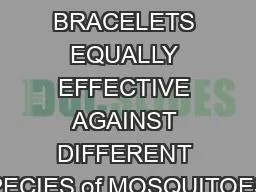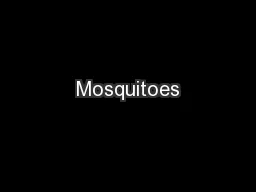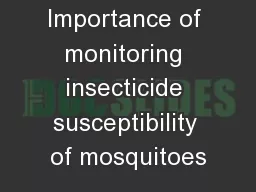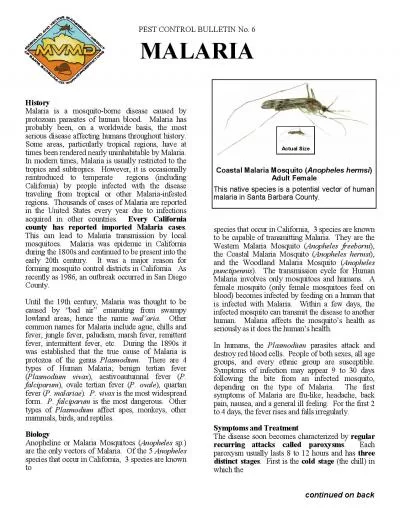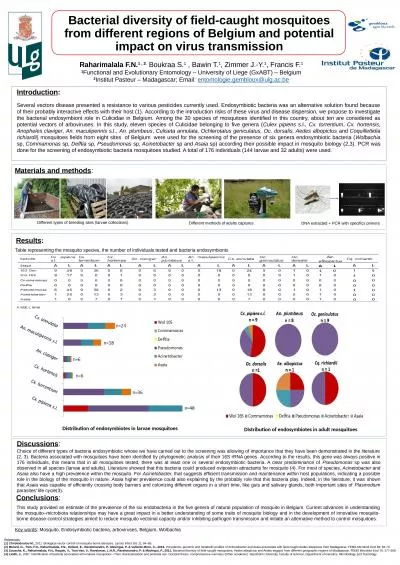PPT-ARE REPELLENT BRACELETS EQUALLY EFFECTIVE AGAINST DIFFERENT SPECIES of MOSQUITOES?
Author : envrrolex | Published Date : 2020-06-23
C hris Dubinsky Justice Coppiano Michael Massoni John Halloran Tables amp Figures Abstract The Goal of this project was to test the effectiveness of common
Presentation Embed Code
Download Presentation
Download Presentation The PPT/PDF document "ARE REPELLENT BRACELETS EQUALLY EFFECTIV..." is the property of its rightful owner. Permission is granted to download and print the materials on this website for personal, non-commercial use only, and to display it on your personal computer provided you do not modify the materials and that you retain all copyright notices contained in the materials. By downloading content from our website, you accept the terms of this agreement.
ARE REPELLENT BRACELETS EQUALLY EFFECTIVE AGAINST DIFFERENT SPECIES of MOSQUITOES?: Transcript
Download Rules Of Document
"ARE REPELLENT BRACELETS EQUALLY EFFECTIVE AGAINST DIFFERENT SPECIES of MOSQUITOES?"The content belongs to its owner. You may download and print it for personal use, without modification, and keep all copyright notices. By downloading, you agree to these terms.
Related Documents

